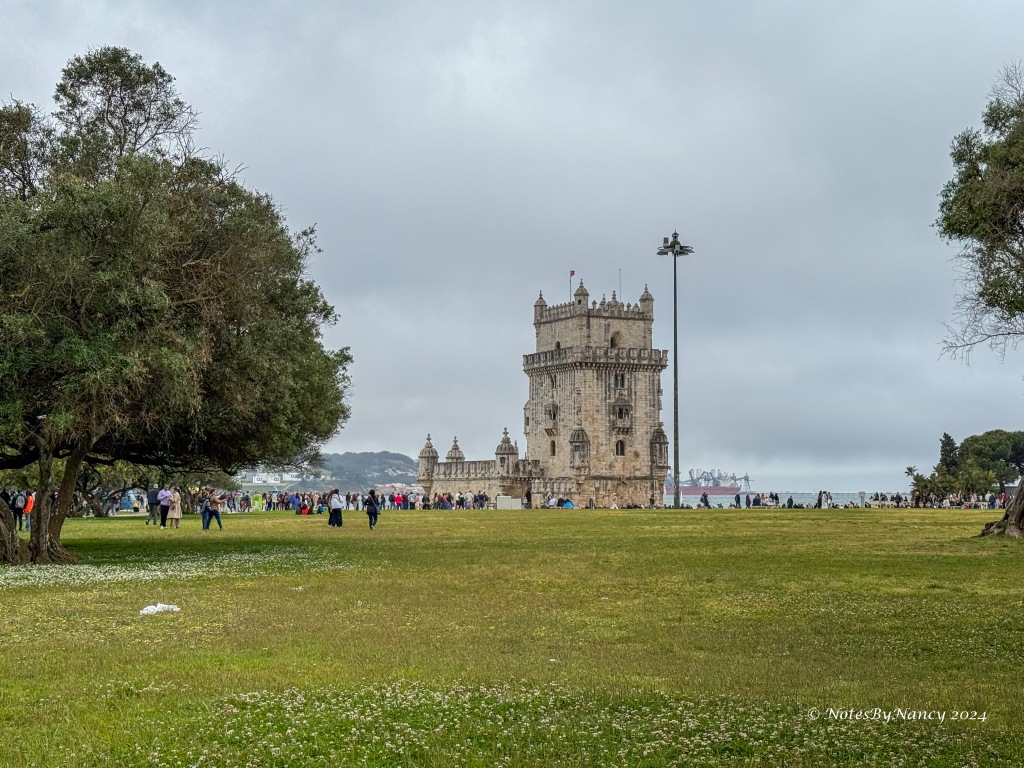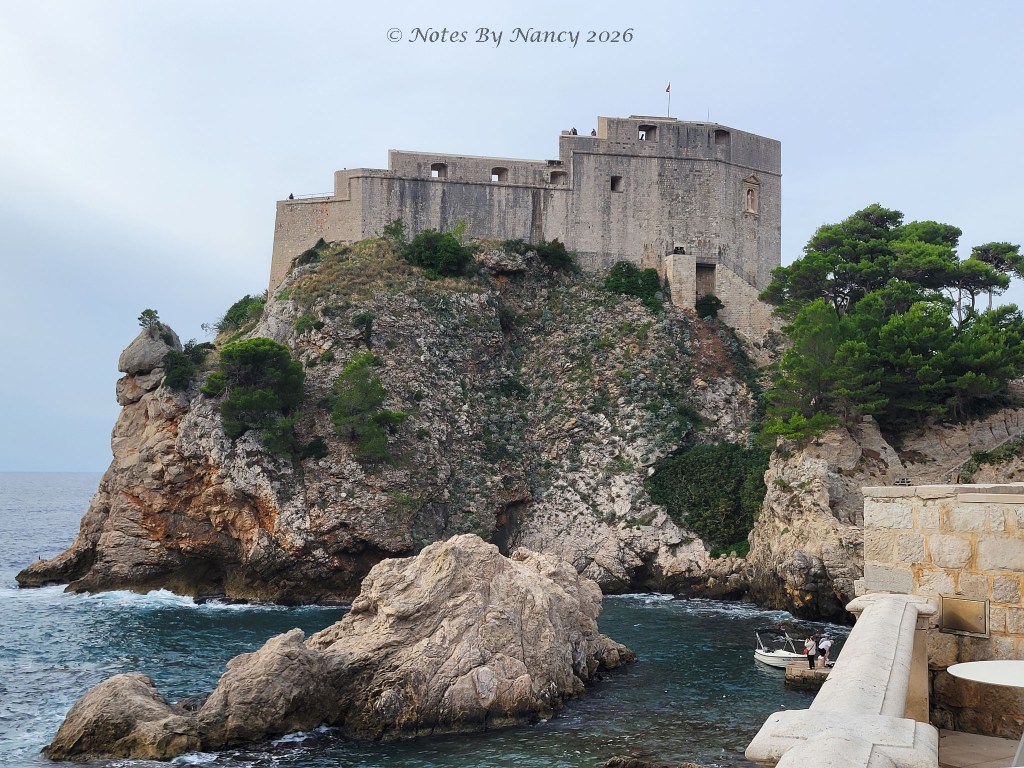It is Sunday, May 5th, on our trip, and most of the museums and attractions in Lisbon are closed – except those in the Belém district to our west along the Tagus River. As we had researched this in advance, our itinerary for Lisbon activities was created around this fact. We also decided that Belém was an area we could tackle on our own without a guide like Carla as we had our Rick Steves and Lonely Planet books!
Belém definitely deserves a day unto itself. There are many interesting sights here. It is easy to reach via train, tram, or bus. The train from Cais do Sodré, a 3-minute walk from our apartment, takes only 20 minutes to Belém, so we decided to go that route. However, we just missed the train we’d hoped to catch and had to wait another 20 minutes for the next one.


At the top of both Rick Steves’ and Lonely Planet’s Belém recommendations is the 16th-century Jerónimos Monastery. Other options include the National Coach Museum and Royal Riding School, Belém Tower, Padrão dos Descobrimentos (Monument to the Discoveries), Maritime Museum, and Pastéis de Belém (which sells the famous egg custard tarts invented by the monks at the monastery). There are activities and exhibits at Centro Cultural de Belém and several other art museums in the area. Also, the National Museum of Archeology (currently closed) and a museum dedicated to the Great Quake of 1755 are nearby.
The walk from the Belém train stop to the monastery only takes about 12 minutes going through the Garden of Afonso de Albuquerque and the Garden Vasco da Gama or up to Rua de Belém walking by the presidential palace and the famous pastry shop. We surprisingly passed a Burger King, I don’t remember seeing as many American fast-food places in Portugal as in other countries we have traveled, so it stood out!
We had to convince Keith that we absolutely were coming back to the crowded pastry shop after our Belém adventures as bakery/pastry shops are like a magnet for him. We needed to get to the monastery because we were already running late and Paula and I had read that the lines could get long. As we neared the monastery at 10am, we realized we didn’t get there nearly early enough – the line stretched the length of the monastery to the Maritime Museum!


So, we opted for the Maritime Museum instead as it was right there. It is actually located in the west wing of the monastery. We spotted a large Viking tour group with their guide’s familiar red lollipop approaching, so we hurried to get in front of them. Viking’s Douro River cruises start with a couple of days in Lisbon before busing to Porto for the cruise portion of the trip. As we approached the ticket counter to pay for admission, they simply asked us how many and handed us tickets – I’d totally forgotten that it was free on the first Sunday of the month until 2pm! Many other museums are also free, including the monastery, on first Sundays (a few are free every Sunday). No wonder there were such crowds early! The Viking group did get in ahead of us, but we got past them while their guide talked to them in front of the huge map.
We all really enjoyed the Maritime Museum, getting an in-depth refresher course on the 14th-16th century explorers and their ships as they discovered new routes and expanded the world. The exhibits also included a variety of fishing and military vessels over the centuries to current times.
After over an hour exploring the museum, we were ready for a snack, so we got pastries and coffees (surprise!) at the museum café and rested our feet before starting our stroll along the Tagus River. As we exited the café, there were now 3 Viking tour buses lined up and the queue for the monastery was still long.
Our next objective was the Monument to the Discoveries, a short 10-minute walk between the Centro Cultural de Belém and the beautiful Empire Square Garden (Jardim da Praça do Império) then thru the tunnel under the train tracks to the river side. The Monument was built in 1940 for the Portuguese World Exhibition using perishable materials. However, in 1960, for the 500th anniversary of the death of Infante D. Henrique, it was decided to rebuild it “in concrete and rose stone masonry from Leiria, and the sculptures in limestone masonry from Sintra.” It reopened in 1985 with a remodeled interior containing a viewpoint, auditorium, and exhibition rooms.
We skipped going inside to continue down the riverwalk towards our next goal, Belém Tower, a 12–15-minute walk away. It appeared closer than it was because we had to navigate around the marina. It was quite windy along the river, but the sailboats were enjoying the day!
Belém Tower (Torre de Belém) was part of three fortresses along the river designed to protect Lisbon in the late 15th and early 16th centuries. Belém Tower was completed around 1520. “As a symbol of the King’s prestige, its decoration displays the Manueline’s own symbolism – calabres that surround the building, finishing it with elegant knots, armillary spheres, crosses of the Military Order of Christ and naturalistic elements.”
While the surrounding park and views are free, there is normally a charge to go into the tower and up to the terrace for the views. As you can see in the pictures, the line was long (free Sunday, remember?). Again, we opted to just admire the exterior, people-watch, and listen to the buskers in the park.
Now, it was time to return to Pastéis de Belém and get the famous egg custard pastries before returning to our apartment on the train. We walked through the Empire Square Garden with its geometrically square paths, blooming orchid trees, and the Belém Monumental Fountain in its center. It appeared to be a madhouse at Pastéis de Belém, but in reality, it was organized chaos! You can select counter service or table service. We decided on counter service and take ours to go. That line probably had twenty people in it, but it moved quickly as the pastries are pre-packaged in orders of 3 or 6, still warm! Both couples got a 6-pack and we headed to catch the train back to Cais do Sodré. The sun had finally come out, so we had a good photo op at the presidential palace with blue skies.

On the walk to the apartment, I was finally able to get a photo of Pink Street, the former red light district of Lisbon. It was painted pink in an urban renewal project in 2013. Now, it’s a major nightlife area, home to bars and restaurants.
It was mid-afternoon when we got back. We were exhausted after over 13,000 steps, so we pulled out the various meats, cheeses, bread, and wine that we’d accumulated over the past several days for our “lupper” (lunch/supper). Except for the cruise/train day in Porto, we’d been getting between 12,000 and 20,000 steps per day – we deserved a restful afternoon! I spent my time downloading everyone’s photos from their phones to my computer since the beginning of the trip. The others vegged out watching more video blogs on Portugal food (we’d tried most of the favorites), Sintra (where we go tomorrow), and the Algarve (where Keith and Paula are headed when Dave and I leave).







































Leave a comment